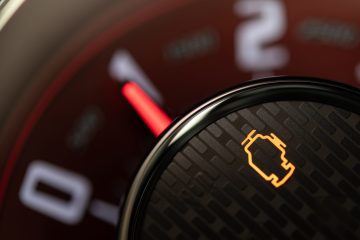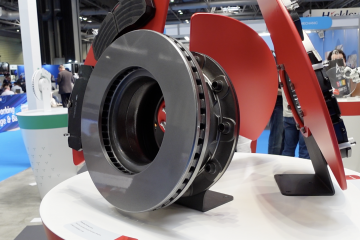As awareness of tyre particulate matter becomes more widespread, A new report from Germany’s largest motoring association ADAC has names Michelin as the best brand for environmental credentials.
Every year, ADAC tests summer and winter tyres in several sizes. The wear behaviour of the tyres is determined for one of the two sizes by using road convoys with several identical vehicles in the vicinity of Landsberg am Lech over a distance of 15,000km. The wear behaviour of the second size is carried out at a special test facility provided by the tyre manufacturer, Bridgestone. The test bench simulates the route of the road convoy test drives. The test bench results are checked by means of several test tyres during the test drives under realistic conditions.
“The evaluation shows that not all tyre manufacturers have yet integrated the highest possible driving safety and low environmental impact into the tyre development process,” ADAC stated. “This also applies to the marketing of the individual manufacturers. In advertising messages, often only tyre performance is emphasised, but not the environmental features of a tyre.
“It is imperative to raise public awareness even further and to emphasise not only tyre performance in driving conditions, but also the environmental behaviour of a tyre in particular.”
Michelin leading
Analysis of almost 100 tyres showed that in almost every size and pattern, Michelin stood out, by not only generating very low levels of tyre particulate matter, but also strong performances in safety tests.
“Michelin is one of the few tyre manufacturers to have recognised this need [to develop and market environmentally-friendly products] and has specifically geared its tyre development towards this,” ADAC added. “Other premium manufacturers such as Pirelli or Bridgestone, on the other hand, still seem to focus almost exclusively on the driving features of a tyre. As a result, the environmental impact of tyre abrasion is up to 50% higher for these manufacturers than for Michelin, whose tyre technology currently gives them an enormous lead over the competition.”
Amongst the 15 tyre manufacturers tested, Michelin, with an average tyre abrasion of just 90g per 1,000km, was shown to be “way ahead of the competition” with the Cross Climate+ (185/65 R15) offering the lowest abrasion rate of any tyre tested at just 58g/1000km. At the same time, the company’s tyres performed consistently well in terms of wet- and dry-road performance (and in snowy conditions, where appropriate) resulting in Michelin emerging as the clear leader.
Increasing problem
ADAC states that, according to estimates, abrasion from car tyres accounts for around one third of all German microplastic emissions. Based on ADAC measurements of tyre wear, which determined an average abrasion of 117g/1,000km and a total mileage of 644.8 billion kilometres, the tyre abrasion caused by passenger car traffic in Germany can be estimated at around 80,000 tons per year, although this also includes particulates from road wear as well.
While the UK has a smaller car parc than Germany, ADAC’s report highlights an increasing problem for tyre particulate matter. One of the problems is the uptake of SUV models, which are heavier and therefore put more pressure on the contact patch, increasing wear and particulate emissions.
The UK government said that immediate action will be taken to increase public awareness about air pollution. An additional £6 million will be added to the annual funding pot for local authorities as part of the Air Quality Grant scheme. This funding sits alongside the £880 million that has already been pledged for local authorities to develop and implement local air quality plans, including Clean Air Zones.
When it comes to PM2.5, the small particulate matter from tyres and brakes, a consultation on new legal targets will launch early this year, with the aim of setting new goals in legislation by October 2022. The government has used the World Health Organisation guidelines on PM2.5 to inform its ambitions in shaping these targets.



